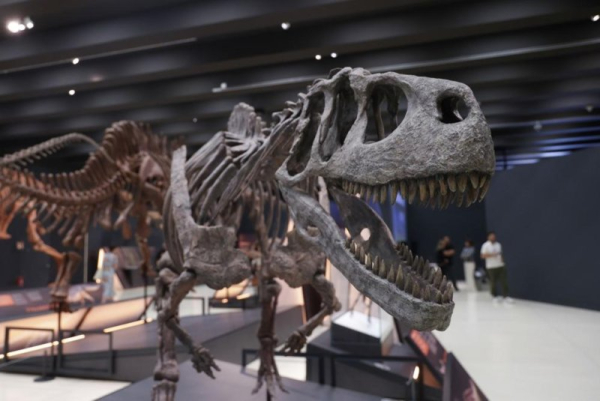
In an interdisciplinary study, specialists from Argentina's National Council for Scientific and Technical Research (CONICET) have identified a significant portion of the skeletal remains, including the skull and jaws, of a large predatory crocodile, classified as a hypercarnivore. This creature inhabited the southern regions of Argentina about 70 million years ago during the final stages of the Cretaceous period.
Hyperpredators are animals whose diet consists of more than 70% animal food. This group includes eagles, vultures, toothed cetaceans, and some species of arachnids and scorpions.
The site, detailed Wednesday in PLOS One, is 19 miles south of the city limits of El Calafate in Patagonia.
Scientists have named the species Kostensuchus atrox, combining “Kosten,” an Aonikenk/Tehuelche term meaning Patagonian winds, and “suchus,” derived from the Greek Souchos, the name of an Egyptian deity with a crocodile head.
“This species has unique characteristics that distinguish it from previously known ones: non-standard dimensions of the dental apparatus and cranium, a powerful jaw structure and enlarged areas of attachment of the chewing muscles. These features confirm its status as a dominant predator in the local ecosystem,” explained Diego Pol, a CONICET researcher from the Bernardino Rivadavia Museum of Natural History.
Despite its predatory lifestyle, the creature is not a dinosaur. It is part of an extinct group of crocodile-like creatures, the peirosaurs, which inhabited the territories of South America and Africa during the Mesozoic era.
The habitat of Kostensuchus included wet, vegetated areas. The body type was massive with relatively short limbs located vertically under the body, which provided greater mobility compared to modern alligators.
The skull, about half a meter long, unusually large for the proportions of the body, earned the animal the comparison with a “bulldog” among reptiles. On the muzzle there were over 50 teeth, some of which exceeded 5 cm and had serrated edges for tearing tissue. The work of the jaws was provided by developed muscles, allowing lightning-fast grasping movements with enormous force.
“In the same geological layers, we found the remains of Maip macrothorax, a carnivorous dinosaur that was one of the last species before the mass extinction and closely related to the Neuquén megaraptor. There is a high probability that Kostensuchus and Maip competed for food resources, similar to the modern rivalry between hyenas and lions in the African savannah,” said Fernando Novas, lead author of the study from the Felix de Azara Foundation.
The scientists' work expands our understanding of the biodiversity of ancient Patagonia, recording the southernmost location of peirosaurids. The discovery also supports the hypothesis that a group of large land predators existed in South America and Madagascar during the Late Cretaceous.
The research involved experts from Argentina, Brazil and Japan, with organizational support from National Geographic and the Brazilian scientific foundations FAPERJ and CNPq.
CONICET stressed that this discovery plays a vital role in reconstructing the picture of Patagonian ecosystems before the global extinction of dinosaurs.
Sourse: www.upi.com





